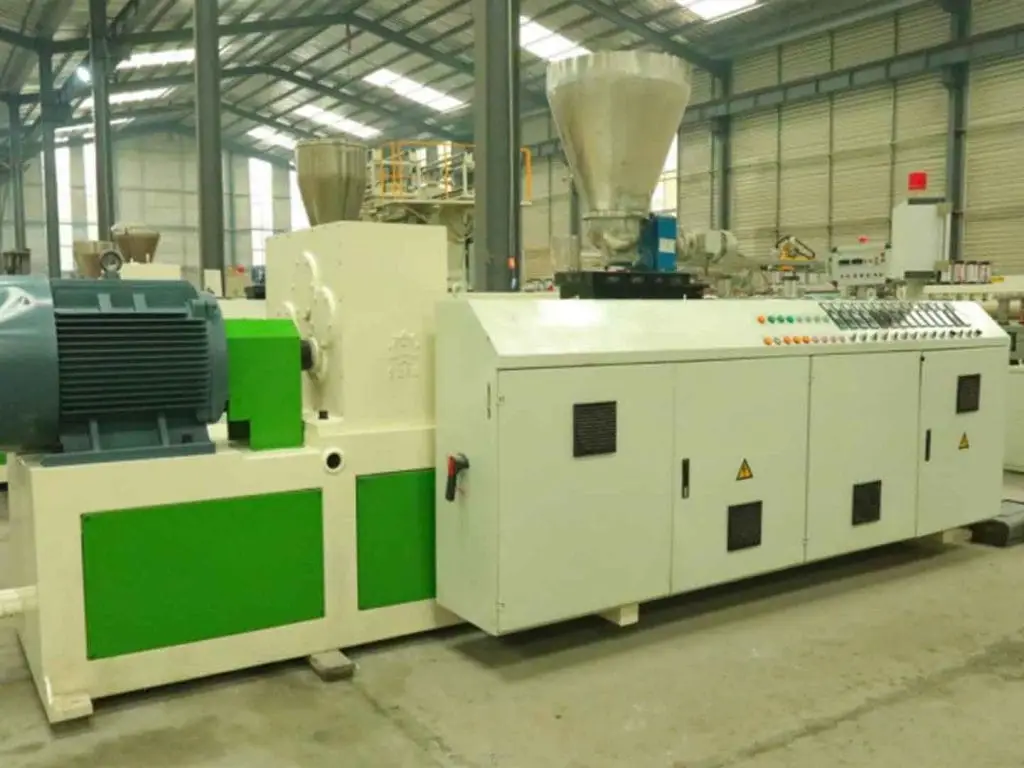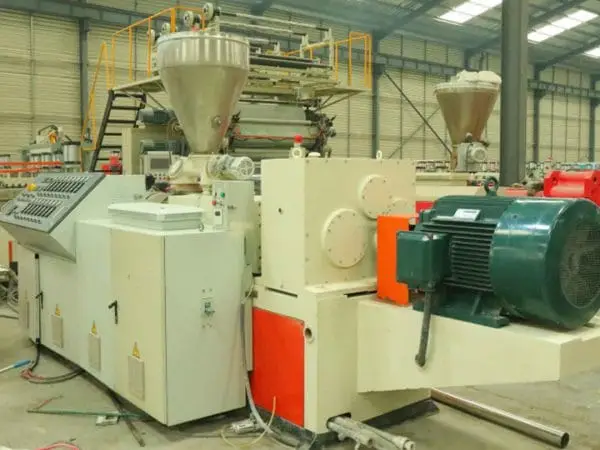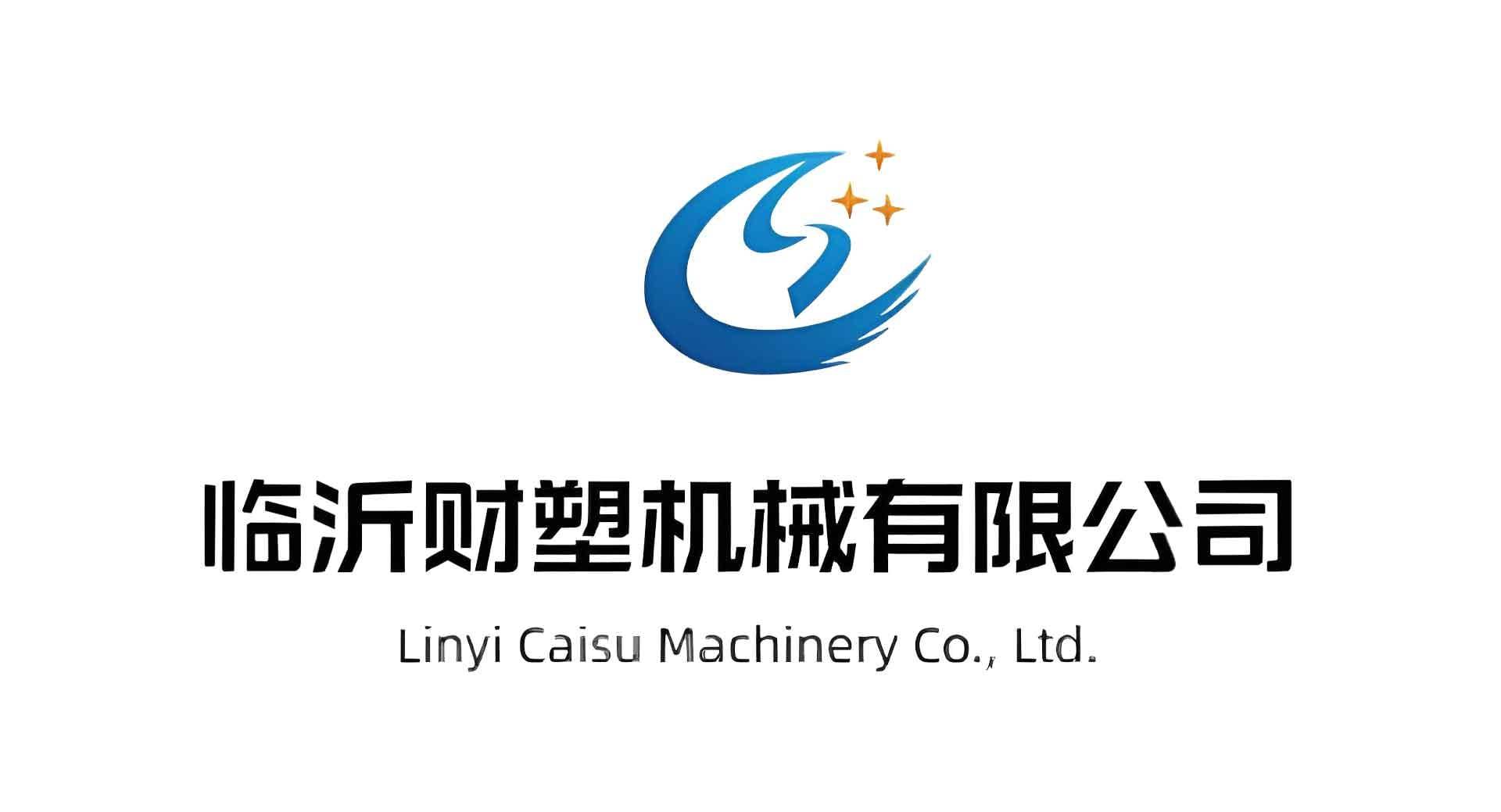Welcome to My Blog!
Before we dive into the content, I’d love for you to join me on my social media platforms, where I share more insights, engage with the community, and post updates. Here’s how you can connect with me:
Facebook: https://www.facebook.com/profile.php?id=61567891941530
Now, let’s get started on our journey together. I hope you find the content here insightful, engaging, and valuable.
Caisu Machinery sells a variety of used plastic pipe production equipment. The products are of high quality and low price. Welcome to contact us for consultation and purchase. We will be happy to serve you.
Table of Contents
When it comes to establishing or upgrading your PVC board production line, one of the key decisions you’ll face is whether to opt for second-hand PVC board production equipment or invest in new PVC board machines. Both options come with distinct advantages and drawbacks, depending on your business’s specific needs, budget, and long-term objectives.
In this blog, we will compare second-hand and new PVC board production lines, focusing on factors such as cost, efficiency, durability, maintenance, and technological features.

Cost Comparison: Second-Hand vs. New PVC Board Production Line
Cost is often the most significant factor when choosing between second-hand and new equipment. A second-hand PVC board production line offers a lower initial purchase price, which can be attractive if you’re working with a limited budget. Purchasing a well-maintained used machine can provide significant savings, allowing you to invest in other areas of your business, such as raw materials or labor.
However, while the initial cost savings are appealing, new PVC board production lines tend to offer better long-term value. New machines come with the latest technology, energy-efficient features, and warranties, which can reduce maintenance costs over time. Although the upfront cost of new equipment is higher, it can result in greater production efficiency and fewer unexpected costs.
Here’s a quick cost breakdown:
| Feature | Second-Hand PVC Board Production Line | New PVC Board Production Line |
|---|---|---|
| Initial Purchase Cost | Lower | Higher |
| Technology Level | Older, still functional | Latest advancements |
| Warranty | Usually limited | Full warranty included |
| Energy Efficiency | May be lower due to age | High, more energy-efficient |
| Maintenance Costs | Higher, may require more repairs | Lower, due to warranty and newer technology |

Durability: How Long Can a Second-Hand PVC Board Production Line Last?
Durability is a crucial factor when assessing the potential of second-hand equipment. A second-hand PVC board production line can last for many years if it has been well-maintained. Machines that have been used in a stable and clean production environment can still perform efficiently, even after years of operation. However, the wear and tear on a second-hand machine can lead to more frequent breakdowns and repairs.
New PVC board production lines, on the other hand, are built with the latest durable materials and technology, ensuring a longer lifespan. With proper maintenance, a new machine can last for decades, offering greater reliability and fewer repairs. Additionally, as new machines come with warranties, you’ll have peace of mind knowing that repairs and replacements will be covered for a set period.
Key Takeaway:
While second-hand PVC board production lines can last many years with proper care, new machines tend to be more durable, providing a longer operational life and fewer maintenance issues.
Maintenance Costs: Understanding the Long-Term Impact
One of the biggest differences between second-hand and new PVC board production lines is the cost of maintenance. Second-hand equipment, although less expensive upfront, often requires more frequent repairs and can be more costly to maintain, especially if spare parts are not readily available. As machines age, their efficiency may decrease, leading to higher energy consumption and more downtime.
New PVC board production lines, however, benefit from cutting-edge technology that is more energy-efficient and requires less frequent maintenance. Additionally, most new machines come with a warranty that covers repair costs for a specified period. This can significantly reduce the risk of unexpected costs and operational disruptions.
| Maintenance Factor | Second-Hand PVC Board Production Line | New PVC Board Production Line |
|---|---|---|
| Repair Frequency | Higher due to wear and tear | Lower with fewer breakdowns |
| Spare Parts Availability | Can be challenging for older models | Easy access to parts and service |
| Energy Efficiency | Lower, higher operational costs | Optimized, reduces maintenance and energy costs |
Efficiency: Which Option Delivers Better Performance?
Efficiency plays a crucial role in maximizing production output and minimizing operational costs. New PVC board production lines typically come with the latest technology, offering faster processing speeds, higher precision, and more automation. Modern machines are built to reduce material waste, optimize energy consumption, and ensure greater overall efficiency in production.
Second-hand PVC board production lines, while they can still perform well, may not match the efficiency levels of new machines. Older machines tend to be less energy-efficient, and their slower processing speeds might lead to lower production capacity. Furthermore, older machines may lack advanced features such as automation or energy-saving modes, which can increase material waste and energy usage.
Key Takeaway:
New PVC board production lines offer higher efficiency in terms of speed, precision, and energy use, while second-hand lines may have limitations in these areas.

Environmental Impact: The Greener Choice?
In today’s manufacturing environment, sustainability is a key consideration. Opting for a second-hand PVC board production line can be an environmentally friendly choice, as it helps reduce the demand for new machines, lowering the carbon footprint associated with their production and shipping. By extending the life of used equipment, you contribute to reducing electronic waste.
On the other hand, new PVC board production lines are often designed with energy efficiency and eco-friendly features, reducing the overall environmental impact of production. These machines consume less power, have lower emissions, and operate more efficiently, making them the greener option in terms of day-to-day operations.
| Environmental Consideration | Second-Hand PVC Board Production Line | New PVC Board Production Line |
|---|---|---|
| Resource Consumption | Lower, reduces demand for new machines | Higher, but more energy-efficient |
| Energy Efficiency | Often less efficient | Higher, more eco-friendly |
| Carbon Footprint | Lower due to reduced demand for manufacturing | Higher production impact, but lower operational emissions |
Conclusion
Choosing between second-hand and new PVC board production lines ultimately comes down to your business’s specific needs, budget, and long-term goals.
- If cost is a major concern and your production volume is relatively low or not highly complex, a second-hand PVC board production line can offer significant savings.
- If you prioritize efficiency, reliability, and long-term performance, a new PVC board production line is the better option. New machines offer advanced features, higher precision, and reduced maintenance costs.
- For businesses that are focused on sustainability, second-hand machines are a great way to minimize environmental impact through reusing equipment, but new machines can contribute to a more energy-efficient and eco-friendly production process.
Both options have their advantages, so it’s important to carefully assess your business’s needs before making a decision. If you need expert guidance on selecting the right PVC board production line for your operation, feel free to contact us today for personalized advice.
FAQ
Is a second-hand PVC board production line reliable?
Yes, if the machine has been well-maintained, a second-hand PVC board production line can be just as reliable as new machines. However, it may require more frequent maintenance and repairs as it ages.
How long does a second-hand PVC board production line last?
The lifespan of a second-hand PVC board production line depends on its previous usage and maintenance. With proper care, it can last for many years but may require more upkeep than a new machine.
Are spare parts for second-hand PVC board production lines hard to find?
It depends on the make and model of the machine. Some older machines may have discontinued parts, making repairs more difficult. It’s essential to check the availability of spare parts before purchasing second-hand equipment.
Can a second-hand PVC board production line match the efficiency of a new one?
New PVC board production lines tend to be more efficient in terms of speed, energy consumption, and automation. However, second-hand equipment can still deliver reliable performance for less demanding production needs.
Should I choose second-hand equipment to save costs?
If you are working with a limited budget and need to keep initial costs low, a second-hand PVC board production line can be a good option. Just be sure to consider long-term maintenance costs and energy efficiency before making your decision.





